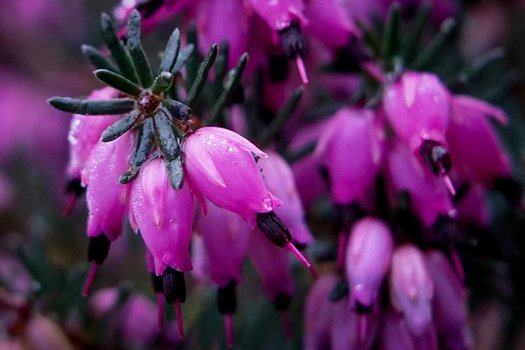

Winter Heath 'Kramer's Rote', Heather 'Kramer's Rote', Heath 'Kramer's Rote', Winter Heath 'Kramer's Red', Heather 'Kramer's Red', Heath 'Kramer's Red', Darley Dale Heath 'Kramer's Rote', Darley Heath 'Kramer's Rote',
Loved for its outstanding upright, bushy habit, evergreen foliage, and glimmering flowers, award-winning Erica x darleyensis 'Kramer's Rote' or 'Kramer's Red' (Winter Heath) is a compact, vigorous shrub with clouds of magenta flowers from mid winter to mid spring (Jan-Apr), covering the dark bronze-green foliage. Great at providing winter color while requiring little care, it is perfect at smothering weeds! This cultivar is a cross between Erica carnea 'Myretoun Ruby' and Erica erigena ‘Brightness'.
| Requirement | |
|---|---|
| Hardiness | 7,8 |
| Heat Zones | 6,7,8 |
| Climate Zones | 2, 3, 5, 6, 8, 9, 10, 14, 15, 16, 17, 18, 19, 20, 21, 22, 24 |
| Plant Type | Shrubs |
| Plant Family | Ericaceae |
| Exposure | Full Sun |
| Season of Interest | Spring, Winter, Early Spring, Mid Spring |
| Height | 1' - 2' |
| Spread | 1' - 2' |
| Water Needs | Average |
| Maintenance | Low |
| Soil Type | Clay, Loam, Sand, Acid, Neutral |
| Characteristics | Plant of Merit, Showy, Evergreen, Deer Tolerant |
| Garden Styles | Coastal Garden, Gravel and Rock Garden, Informal and Cottage |
| Planting Place | Banks and Slopes, Ground Covers |